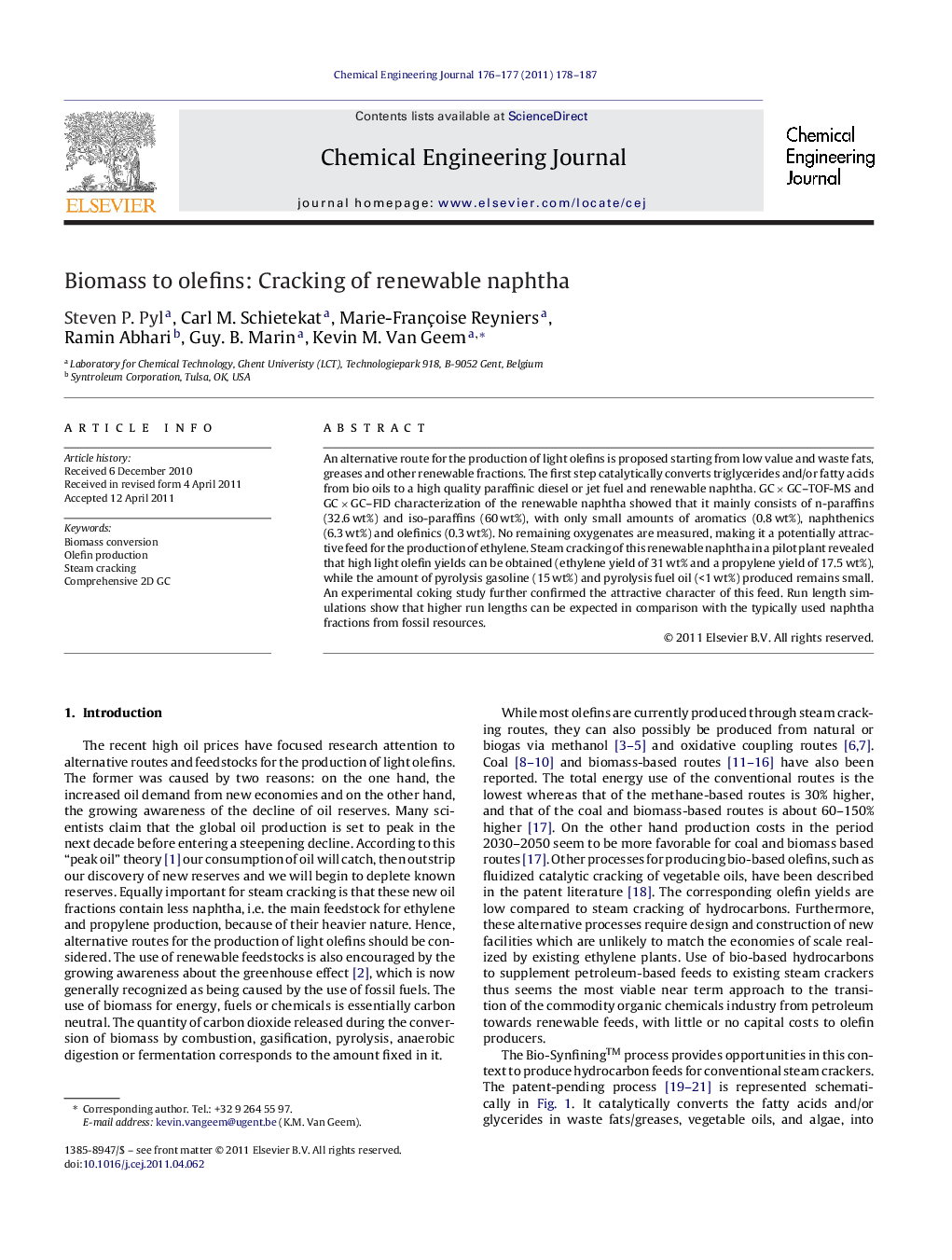| کد مقاله | کد نشریه | سال انتشار | مقاله انگلیسی | نسخه تمام متن |
|---|---|---|---|---|
| 150686 | 456455 | 2011 | 10 صفحه PDF | دانلود رایگان |

An alternative route for the production of light olefins is proposed starting from low value and waste fats, greases and other renewable fractions. The first step catalytically converts triglycerides and/or fatty acids from bio oils to a high quality paraffinic diesel or jet fuel and renewable naphtha. GC × GC–TOF-MS and GC × GC–FID characterization of the renewable naphtha showed that it mainly consists of n-paraffins (32.6 wt%) and iso-paraffins (60 wt%), with only small amounts of aromatics (0.8 wt%), naphthenics (6.3 wt%) and olefinics (0.3 wt%). No remaining oxygenates are measured, making it a potentially attractive feed for the production of ethylene. Steam cracking of this renewable naphtha in a pilot plant revealed that high light olefin yields can be obtained (ethylene yield of 31 wt% and a propylene yield of 17.5 wt%), while the amount of pyrolysis gasoline (15 wt%) and pyrolysis fuel oil (<1 wt%) produced remains small. An experimental coking study further confirmed the attractive character of this feed. Run length simulations show that higher run lengths can be expected in comparison with the typically used naphtha fractions from fossil resources.
► Steam cracking of renewable naphtha was studied in a pilot plant.
► The naphtha was derived from waste fats and greases by catalytic hydrotreatment.
► The pilot plant experiments show that high light olefin yields can be obtained.
► Based on an experimental coking study, high run lengths can be expected.
Journal: Chemical Engineering Journal - Volumes 176–177, 1 December 2011, Pages 178–187